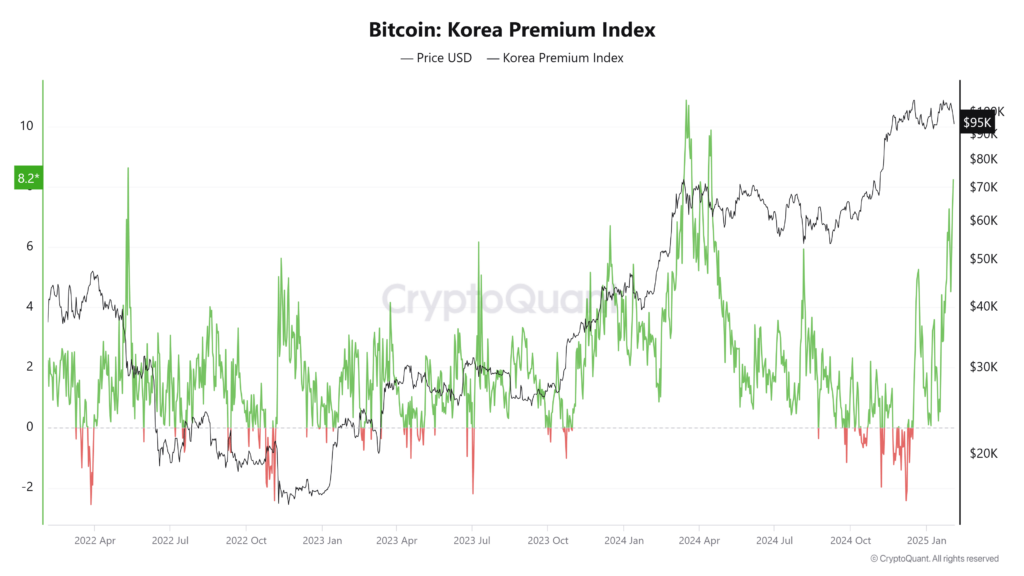- February 9, 2025
- Category: Weekly Crypto Digest

This week, Bitcoin crashed to $91,231, triggering record liquidations, while Trump signed an executive order for a sovereign wealth fund. Senator Bill Hagerty proposed stablecoin legislation, and five U.S. states pushed for Bitcoin reserves. Ethereum’s supply returned to pre-Merge levels, and the kimchi premium hit a 10-month high.
Read the top 7 crypto stories of the week below.
Largest Crypto Market Liquidation in History Amid U.S. Tariff War
On February 3, 2025, Bitcoin plummeted to $91,231, triggering the largest single-day market liquidation in history, with $2.24 billion in leveraged positions wiped out. The crash was linked to new U.S. trade tariffs imposed by President Donald Trump on multiple countries, raising fears of an escalating global trade war.
The panic sell-off briefly pushed Bitcoin’s “kimchi premium” in South Korea to a 10-month high of 9%, indicating strong demand despite the volatility. However, as U.S., Canada, and Mexico postponed the tariff implementation for 30 days, Bitcoin rebounded to $102,500 on February 4, only to drop again to $96,000, where it stabilized by the week’s end.
Trump Signs Executive Order to Create Sovereign Wealth Fund
On February 3, President Donald Trump signed an executive order establishing a U.S. sovereign wealth fund, marking a major shift in economic strategy. The fund’s goal is to boost financial stability, reduce tax burdens, and enhance long-term national security.
The move has sparked speculation about the fund’s potential crypto exposure, but bets on the Polymarket prediction platform suggest that the chances of the U.S. creating a Bitcoin reserve within Trump’s first 100 days have dropped to 18%.
Senator Bill Hagerty Introduces Stablecoin Legislation
U.S. Senator Bill Hagerty has introduced a new stablecoin regulation bill, aiming to provide legal clarity for stablecoin issuers while ensuring compliance with U.S. financial laws. The proposal focuses on:
✔ Defining regulatory frameworks for fiat-backed stablecoins.
✔ Setting capital requirements for issuers.
✔ Requiring transparency and audits to prevent systemic risks.
The bill is expected to shape stablecoin policies in the U.S. at a time when Tether and Circle continue to dominate the market, issuing a combined $8.5 billion in stablecoins since the start of 2025.
Crypto Fear & Greed Index Drops to 35 – Lowest Since September 2024
On February 7, 2025, the Crypto Fear & Greed Index fell to 35, the lowest since September 2024, signaling a surge in market fear and uncertainty.
This decline reflects growing concerns about market stability, reminiscent of a September 2024 event, when Bitcoin plunged from $45,000 to $41,000 in just 24 hours. Current conditions suggest increased panic selling, with Bitcoin trading at $43,200 (-3%) and Ethereum at $2,800 (-2%).
Trading volumes surged in response:
✔ Bitcoin volume on Coinbase increased by 25% due to heightened activity.
✔ Ethereum volume on Binance rose by 20%, indicating traders are repositioning.
The index drop raises the risk of further volatility, as investors react to macroeconomic uncertainty and declining sentiment in crypto markets.
Ethereum Supply Returns to Pre-Merge Levels
For the first time since The Merge in 2022, Ethereum’s total supply has returned to pre-Merge levels, reaching 120,521,725 ETH as of February 5, 2025. This marks a significant shift in Ethereum’s monetary policy, challenging its deflationary narrative.
According to Ultrasound.money, Ethereum’s post-Merge era initially resulted in a net supply reduction, reaching a low of 120,064,500 ETH in April 2024. However, following the Dencun hard fork, a decrease in gas fees and changes to blob transactions have reduced the burn rate, leading to a gradual supply increase.
Key takeaways:
✔ ETH inflation is rising, with more tokens being minted than burned.
✔ Dencun’s impact on L2 transactions is reducing the ETH burn rate.
✔ The upcoming Pectra hard fork in March is expected to further influence Ethereum’s supply dynamics.
Despite these changes, Ethereum’s transaction volume remains high, suggesting that network usage has not declined significantly despite the increasing supply.
U.S. States Propose Bitcoin Reserve Bills
In a significant policy development, five U.S. states—New Mexico, Iowa, Kentucky, Missouri, and Florida—have introduced bills to create state-controlled Bitcoin reserves. If passed, these laws would allow states to allocate 5–10% of their financial reserves into Bitcoin investments as part of long-term treasury diversification strategies.
This follows a broader trend of governments worldwide exploring crypto reserves, mirroring previous proposals in Czechia and El Salvador.
Kimchi Premium Reaches 10-Month High Amid Bitcoin Crash

On February 3, 2025, the kimchi premium—the price difference between Bitcoin in South Korea and global exchanges—spiked to 9%, its highest level since April 2024.
According to CryptoQuant, the average daily kimchi premium currently sits at 8.24%, having surged rapidly since mid-January 2025. This phenomenon occurs due to South Korea’s strict capital controls, which prevent easy arbitrage between domestic and international markets.
Why does the kimchi premium matter?
✔ It typically rises in bull markets, when South Korean traders place higher bets on Bitcoin.
✔ However, it can also surge during panic selling if selling pressure is lower in South Korea compared to global markets.
The current kimchi premium signals wider crypto market instability, with increased selling pressure globally. The surge is a reaction to macroeconomic uncertainty rather than excessive retail speculation.
Add a comment
You must be logged in to post a comment.

